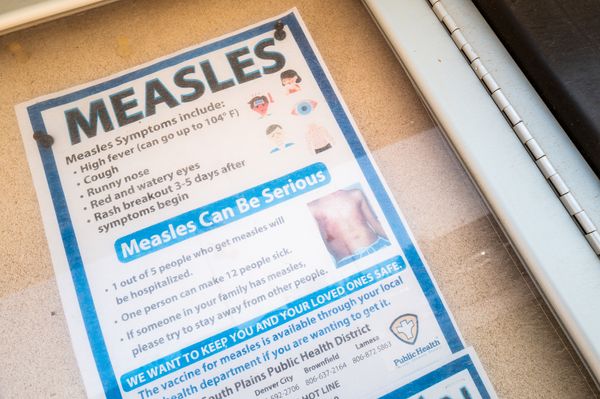
"When will the Fed cut rates?" has become the great macroeconomic guessing game of 2024. Regrettably, the May jobs report did little to clarify when the central bank's rate-setting committee will pivot toward easing.
The Federal Open Market Committee (FOMC) came into the year penciling in three quarter-point cuts to the short-term federal funds rate. Overly optimistic market participants anticipated at least six rate reductions this year.
Alas, sticky inflation data and a robust labor market have forced the Fed to delay taking down rates from a 23-year high.
As for when the Fed will actually get around to cutting interest rates? No one knows for sure. But you can take any moves off the table for the next Fed meeting. The FOMC will release its latest policy statement on Wednesday just a few hours after we get the next CPI report.
Markets and knowledgeable observers say the odds of a cut at the July meeting are remote, as well. True, JPMorgan Chase (JPM) and Citigroup (C) predict a cut coming out of the FOMC's July confab, but the two money center banks are very much in the minority.
If we use a sort of wisdom of crowds approach to forecasting the Fed's pivot toward easing, September remains the betting favorite, with markets essentially calling it a coin flip.
As of June 7, interest rate traders assigned a 47% probability to the Fed making its first quarter-point cut in September, down from 55% a day ago, according to CME Group's FedWatch Tool.
On the other hand, traders lifted the odds of the first rate cut coming in December to 40% from 27% the previous day.
The bottom line is that the answer to the question of "when will the Fed cut rates" remains as elusive as ever. To get a sense of what the experts are saying about the FOMC's possible paths, we turned to economists, strategists, portfolio managers and other knowledgeable observers. Please see a selection of their commentary, sometimes edited for brevity or clarity, below.
Fed rate cuts: The experts weigh in

"The May jobs numbers kill off any lingering chance of the Fed cutting interest rates in July, but our base case remains that a run of much weaker prints is coming, enabling a September easing. We continue to look for 125 basis points [or 1.25 percentage points] of easing this year, with a quarter-point cut in September, followed by half-a-percentage-point cuts each at the November and December meetings." – Ian Shepherdson, chairman and chief economist at Pantheon Macroeconomics
"The Fed and investors will have to wait for more decisive information to see which way this economy and inflation is ultimately going to break. The ambiguity on the May labor market front will place even more attention on next week's CPI inflation data and how Jay Powell and the FOMC are factoring in the latest numbers into their rate-cut expectations at next week's FOMC meeting." – Scott Anderson, chief U.S. economist at BMO Capital Markets
"The Establishment Survey reported 272,000 jobs created in May, surprising to the upside and making it more difficult for the Fed to cut interest rates soon. This pushes market odds of three cuts down to one, or possibly two, with yields up across the Treasury curve." – Mace McCain, chief investment officer at Frost Investment Advisors
"[The May] employment data likely will keep the Fed in a wait-and-see mode at its meeting next week. Policymakers will need to see a few slower inflation reports over the summer in order to start cutting rates by the fall, and all eyes now turn to next week's CPI report, to be released on the same day as the conclusion of the FOMC meeting." – Sarah House, senior economist at Wells Fargo Economics
"Inflation appears to be stuck in a range and there will need to be several consecutive months of undeniable proof that it is finally moving down at a clip, rather than a crawl, before any action is taken. This is simply not happening at the moment and there's no reason to suggest it will next month or the month after that. Some commentators also believe the Federal Reserve won't cut interest rates in the run up to an election to avoid appearing politically motivated. We expect that there's a significant risk that we might not see a rate cut until 2025." – Nigel Green, CEO at deVere Group
"A July cut is off the table at this point." – Sonu Varghese, global macro strategist at Carson Group
"Before Friday morning this week's labor data arrived cooler than anticipated. But the main event – the May jobs report – delivered just the opposite. Markets are responding by sending yields to the nosebleeds, but stocks remain near the flatline despite the masters of fixed-income odds downwardly adjusting prospects of a September Fed cut to a coin-flip. Still, this report provides evidence for hawks and doves alike with blockbuster job growth and robust wage pressures coinciding with an uptick in unemployment." – José Torres, senior economist at Interactive Brokers
"The hot wage figures in the May jobs report underscore our base case that the first Fed rate cut is likely coming in the fourth quarter of this year. Regardless, the nonfarm payrolls numbers should not change the narrative around the fundamentals. Macro indicators have been volatile, but the trends in consumer and corporate data continue to suggest solid demand and that should fuel earnings growth over the next year." – Elyse Ausenbaugh, head of investment strategy at J.P. Morgan Wealth Management
"The May jobs report should exterminate any hopes of a rate cut this year." – Sean Snaith, director of the Institute for Economic Forecasting at the University of Central Florida
"We're in a balancing act: yet another month of unemployment under 4% emphasizes the strength of the labor market, while wage growth and consumer power are losing steam. We're cautiously optimistic about the job market's resilience, while also remaining vigilant on potential headwinds to the consumer like higher-for-longer rates. We expect this strong report will dissuade the Fed from lowering interest rates in the near term." – Eric Roberts, executive director and CEO at Fiera Capital U.S.
"The May jobs report bolsters our conviction that underlying growth conditions remain resilient, and we retain our baseline call for just one rate cut in 2024." – Jonathan Millar, senior U.S. economist at Barclays
"A broader view of the labor market, considering information from the Job Opening and Labor Turnover Survey (JOLTS) and weekly jobless claims, would indicate demand for labor is shifting lower. This should limit any impact to the Fed's expected rate path as we still target September as the most likely for an initial rate cut. Next week's FOMC meeting should not have any surprises but, upcoming inflation data takes on added importance based on the higher wage reading in the employment report." – Steve Wyett, chief investment strategist at BOK Financial
"The May employment report, which showed an increase of 272,000 jobs, came in a bit stronger than expected. Chances of a Fed rate cut will likely decline, probably taking July off the table but keeping alive the possibility of a cut or two in the fourth quarter." – David Royal, chief financial and investment officer at Thrivent
"We believe the Fed does want to cut this year, but a cut is unlikely to happen until September at the earliest. It doesn't particularly matter if they start hiking in September or in November, what matters is the cadence from there." – John Kerschner, head of U.S. securitized products and portfolio manager at Janus Henderson Investors







